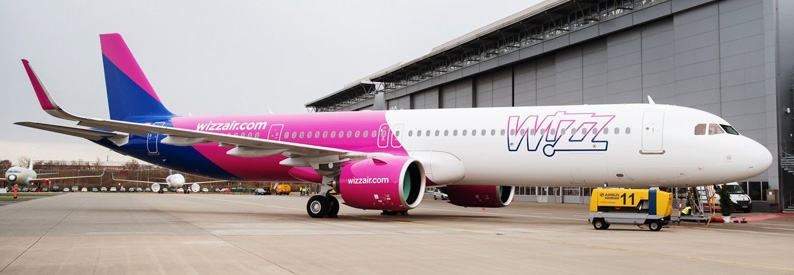Wizz Air Densifies Network for CEE Growth

Wizz Air is strategically shifting its focus toward network densification as it regains momentum following recent aircraft groundings and supply chain challenges, CEO József Váradi revealed during the fiscal 2025 third-quarter earnings call. The Budapest-based ultra-low-cost carrier (ULCC) is concentrating on reinforcing its existing routes rather than expanding into new markets, a move Váradi described as the “safest way to grow.”
“Our focus will be on densifying the network as opposed to diversifying,” Váradi explained. “We have an extensive backbone of a network … but we still need to put meat on the bones.” By increasing flight frequencies on key routes, Wizz Air aims to build market leadership, strengthen brand awareness, and enhance profitability through higher utilization of its existing infrastructure. This approach allows the carrier to optimize operations without the risks associated with venturing into untested markets.
The airline’s renewed focus comes at a crucial time. Wizz Air has been significantly impacted by issues related to Pratt & Whitney GTF engines, which led to aircraft groundings and subsequent operational disruptions. However, as supply chain constraints ease and grounded aircraft return to service, the company is well on its way to recovering fleet capacity. In tandem with the return of its previously grounded aircraft, the integration of new Airbus A321neo models into the fleet is set to propel Wizz Air back to a 15-20% annual capacity growth profile over the next five years.
Positioning itself for sustained growth, Wizz Air is also looking to capitalize on the robust demand in its core market—Central and Eastern Europe (CEE). The region is poised for significant air travel expansion over the next decade. The carrier estimates that Central and Eastern Europe will generate approximately 100 million new passengers by 2035, driven in large part by burgeoning markets such as Poland. According to forecasts, Poland alone is expected to see traffic rise by nearly 36 million passengers annually by 2029, potentially reaching over 90 million passengers.
“There will be roughly 100 million additional passengers over the next 10 years or so, requiring 300 aircraft,” Váradi stated. “We have a net 190 aircraft to be delivered by 2030, so effectively, if we are focused on the region, if we own the market here, we can deliver our entire growth in [CEE].” This robust market outlook reinforces Wizz Air’s strategic decision to densify its network within the region, aiming to capture a larger share of the increasing demand and to solidify its position as the dominant carrier in Central and Eastern Europe.
Additionally, Wizz Air has revised its Airbus delivery schedule to ensure a smoother capacity growth trajectory. By carefully coordinating the return of grounded aircraft with new aircraft arrivals, the airline is mitigating any potential disruptions to its operations. This adjustment in delivery scheduling is a critical element of the carrier’s broader strategy, ensuring that capacity growth is aligned with market demand and operational stability.
Wizz Air’s focus on network densification reflects its commitment to capitalizing on existing strengths and consolidating its position in key markets. With plans to boost flight frequencies on established routes, a recovering and expanding fleet, and a favorable market outlook in Central and Eastern Europe, the carrier is well-positioned to drive sustainable growth. As Wizz Air continues to navigate post-disruption challenges, its strategy of strengthening current networks over diversifying into new markets promises to enhance profitability and deliver long-term benefits for both the airline and its passengers.
Related News : https://suspicious-zhukovsky.67-21-117-18.plesk.page/?s=Wizz+Air
